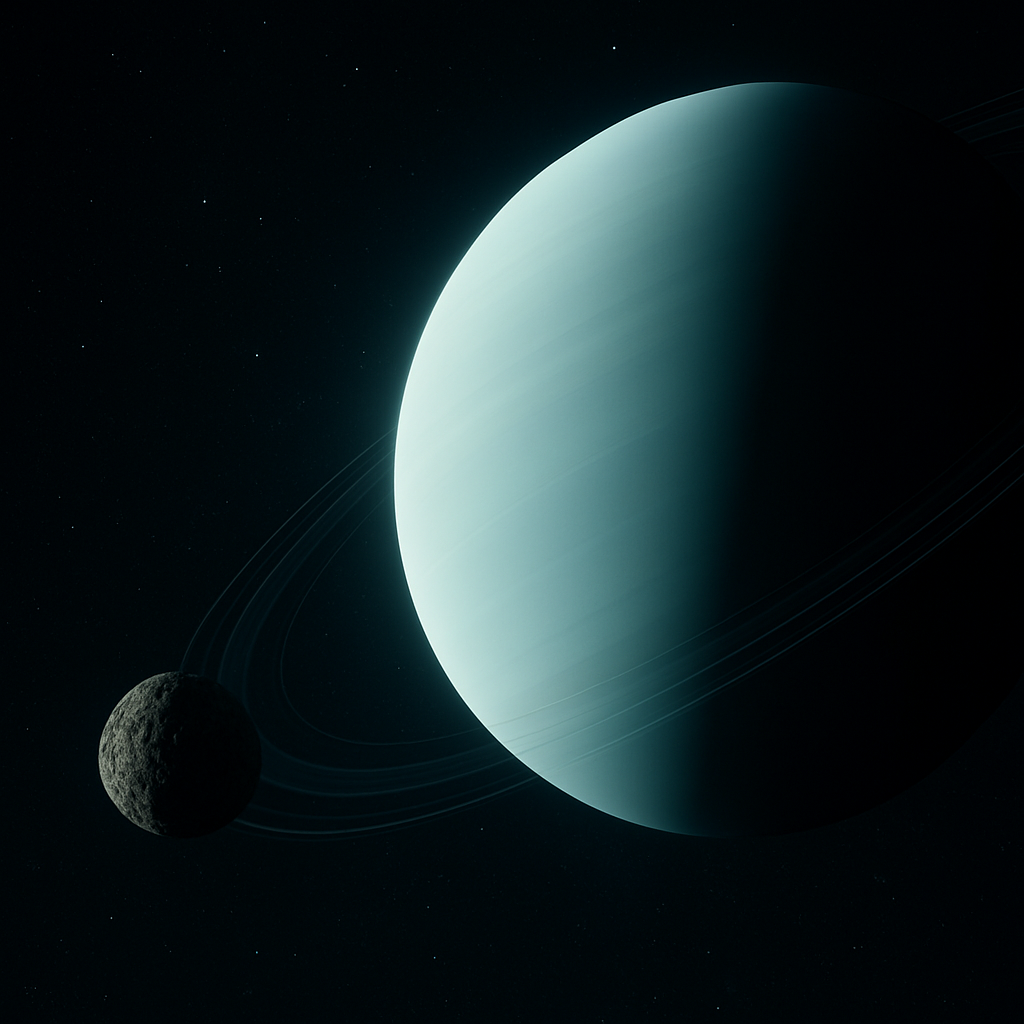NASA Unveils a Hidden Moon Around Uranus: A Cosmic Surprise by the James Webb Telescope
The James Webb Space Telescope has made an unexpected discovery of a new moon orbiting Uranus, bringing the planet’s moon count to 29. This tiny celestial body, only 10 kilometers wide, was missed by both Voyager 2 and the Hubble Telescope.
The Discovery of S/2025 U 1: A New Chapter for Uranus
In a thrilling addition to the field of astronomy, NASA has discovered a previously unknown moon orbiting Uranus. This celestial body, designated S/2025 U 1, is a diminutive 10 kilometers across, making it a challenging target for telescopes. Prior to its detection by the James Webb Space Telescope, this moon had escaped the notice of both Voyager 2, which passed Uranus in the 1980s, and the Hubble Space Telescope, highlighting the advanced observing capabilities of the James Webb.
The discovery is a testament to the sophistication of the James Webb Space Telescope, which continues to push the boundaries of what astronomers can detect in our solar system and beyond. With this new addition, the total number of known moons orbiting Uranus has increased to 29, fueling curiosity about what other hidden treasures the universe might hold.
The Role of the James Webb Space Telescope
The James Webb Space Telescope represents a significant leap forward in astronomical research. Equipped with advanced technology, it allows scientists to observe the universe in unprecedented detail. The recent discovery of S/2025 U 1 showcases its ability to detect faint objects that older telescopes could not. This accomplishment not only emphasizes the telescope’s importance in our quest to understand the cosmos but also inspires hope for future discoveries that may reshape our understanding of the universe.
Some key features of the telescope include:
- An extensive range of infrared capabilities, which can reveal objects obscured by dust.
- A larger primary mirror than previous telescopes, enabling greater light capture.
- Advanced spectrographs that provide detailed information about celestial bodies’ compositions and motions.
The Growing Family of Uranus Moons
Uranus is now home to 29 recognized moons, each with unique characteristics and historical significance. The discovery of S/2025 U 1 adds a new member to this diverse group. Many of Uranus’s moons are named after characters from literature, particularly the works of Shakespeare and Alexander Pope, reflecting the cultural intersections that scientific discoveries can inspire.
Each moon provides valuable insights into the formation and evolution of the Uranian system. As we learn more about these moons, scientists can make better predictions about the dynamics and history of Uranus and its place within the broader context of the solar system.
The Endless Possibilities of Space Exploration
This discovery is a reminder that our celestial neighborhood is full of wonders waiting to be uncovered. The detection of S/2025 U 1 underlines the potential for further discoveries around Uranus and other planets in our solar system. Many sources suggest that there could be more hidden moons and cosmic phenomena awaiting discovery, thanks to the continued advancements in space technology.
Stay curious and keep looking up! With every new finding, we deepen our understanding of the universe and our place within it. Follow our journey as we explore the boundless skies and unveil more cosmic mysteries. Be sure to check back regularly for more updates on the latest space explorations and discoveries.

Leave a Reply